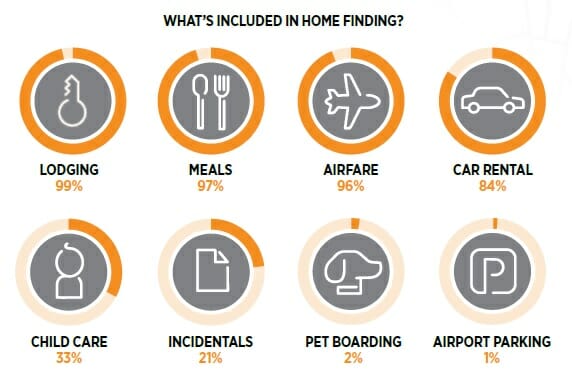Companies from all industries are struggling to fill the job openings they have, which makes retaining the talent they do have even more critical. Offering relocation – either to an existing employee or a new hire – can be useful recruiting and retention tool for organizations. The company offering the strongest benefits and which makes the entire process easier on the employee can stand out in the war for talent.
There are two major approaches to offering relocation benefits to employees: either the company pays for services directly or reimburses the employee at the end of the process. One point that many companies and employees don’t realize, however, is that with recent tax law changes, both of these methods are now taxable to the individual they benefit.
To offset this change and continue to make relocation as attractive as possible, many companies are now using what is commonly referred to as a “lump sum allowance” for relocation. Rather than paying actual relocation costs, lump sum allowances enable the employer to make a single payment at the start of the relocation process that will then cover all of the employee’s various relocation expenses.
That said, there are differences in what these lump sum approaches entail. Many cover everything, while others put tight restrictions on what these allotments can be used for.
Motus, my company, analyzed more than 800 existing lump sum relocation policies to gain insight into what US employers are typically including in these programs. In the resulting report, we focused on three specific benefit areas: home finding, temporary living and the final move.
House hunting
 Companies looking to move an employee to another region typically offer some sort of home finding assistance or reimbursement for travel expenses associated with finding a home. Those companies taking the lump sum approach include allocations for home finding expenses some 93% of the time. As can be expected, there is a time limit on these expenses – most often in the range of 4-6 travel days.
Companies looking to move an employee to another region typically offer some sort of home finding assistance or reimbursement for travel expenses associated with finding a home. Those companies taking the lump sum approach include allocations for home finding expenses some 93% of the time. As can be expected, there is a time limit on these expenses – most often in the range of 4-6 travel days.
During that time, geographically-specific lodging (99%), meals (97%) airfare (96%) and car rentals (86%) are most frequently included. The distance between a relocation destination and an employee’s starting point helps determine whether mileage or airfare should be part of the package. Airfare assistance was typically included when driving distance was 250 miles or more.
In addition, for most companies, home finding expenses cover travel for both the employee and one other adult (86%) when journeying to find the right home, while another 13% make sure to cover the costs for bringing the entire family along.
Temporary living benefits
Many companies provide temporary living benefits to employees that have not completed their move, but are already working in a new location. These benefits can also be offered to employees who find themselves in the unfortunate situation where their belongings are still in transit and/or they can’t move into their new house yet.
Our research found that these expenses are included in lump sum programs some 95% of the time. Most temporary living policies also typically include airfare associated with traveling home (64%) and meals (60%). When it comes to mileage reimbursement or airfare, however, many employers (41%) only included airfare for driving distances of 250 miles or more.
There is also a time limit attached to these benefits; the most common durations for temporary living expenses to be covered were 30 days (39%) and 60 days (21%). That said, the research found that 5% of companies provide a full three months of temporary living.
Car rentals (57%) are also commonly included in lump sum temporary living benefits.
Final move
When the time comes to relocate the family, the stage commonly labeled the “final move” has been reached. We found 62% of companies include additional benefits for “final move expenses.” More than 80% of those that include such benefits in a lump sum policy include travel allowances for meals, mileage and/or airfare and lodging.
Relocating to a new area and finding the right home is stressful. Using a lump sum approach instead of individually reimbursing for every relocation expense not only makes it easier for the relocating employee and their families, but it helps employers control costs. Additionally, allowing the employee to spend the relocation money on what they need provides a true benefit – and one that can help a company attract and retain top talent.
It’s crucial to stay informed on industry relocation practices such as lump sum policies and stay current on how they are continuously changing within the business. Efficient relocation programs mean better tools for finding the top talent within your industry – a task that’s ground-breaking in today’s tight job market.
